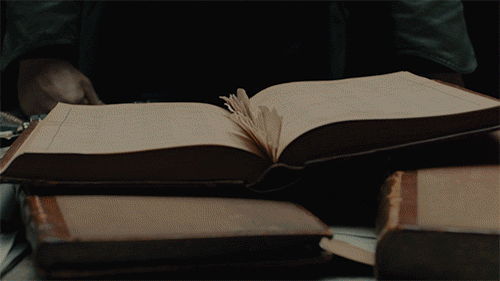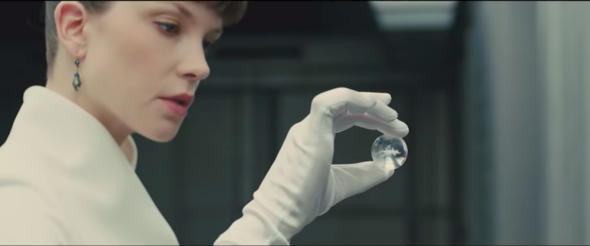This post contains light spoilers for Blade Runner 2049.
In one way or another, many of our most important innovations—from the clay tablet to the smartphone—have initially been prostheses of memory. Unable to trust our own cognitive capacities, we find other ways to preserve what we’ve learned—sometimes for our own sakes, sometimes by communicating that knowledge to others: That’s as true today when we photograph our food as it was centuries ago when our ancestors copied favorite quotations into commonplace books. Fittingly, the trajectory of such inventions plays a central role in the new Blade Runner 2049, a film that is, above all else, a science-fictional take on memory and its discontents.
To make sense of Blade Runner 2049’s dazzling vision of the future, you have to look at the ways it conceives our ties to the past. That’s partially a problem of context, since this new story inevitably plays out in dialogue with its frequently revised 1982 predecessor. Simultaneously, its own narrative circles around crises of recall—especially those of its ostensible protagonist, Ryan Gosling’s K, who spends much of the story struggling to make sense of a recollection from childhood, one that may or may not be his own.
These two threads intertwine as director Denis Villeneuve and his collaborators build out the world of their story. In interviews, Villeneuve has suggested that one of the production’s central challenges was to build on the already-obsolete 2019 of the original, calling it “an alternative future.” Though we only glimpse it in pieces and parts, the 2049 of the film appears to have been partially irradiated by nuclear catastrophe and devastated by ongoing ecological collapse. If the original Blade Runner was bleak, this one is only more so, though it’s somehow more beautiful for it.
Within the film itself, Villeneuve’s explanation of how things got this bad is literally hazy: Characters occasionally refer to an event called the Black Out that seems to have corrupted and destroyed data worldwide. An animated prequel short suggests that that event was perpetrated by rebellious replicants seeking to hide their synthetic origins. Within Villeneuve’s film, however, the catastrophe goes largely unexplained. And though the disaster was digital, the loss is perhaps most dramatically represented by the image of Gosling flipping through a book, only to find that the critical pages are missing.

Alcon Entertainment LLC
Even as it emphasizes those broken links, 2049 is astutely renders the more material traces of earlier moments, most of all when it imagines the technologies our descendants might use to preserve digital forms of memory. Consider, for example, its take on printed photographs, which played important roles in Ridley Scott’s original. Failing to anticipate how photographic technology would advance, that film’s sets are peppered with printed images, many of them seemingly dating back decades. In one scene, Harrison Ford’s Rick Deckard uses a bulky scanner to zoom in on the details of one such picture. The device may be electronic, but once he’s found what he’s looking for, he prints the detail out, creating another artifact that he can carry with him through his grittily analog world.
Instead of abandoning this photographic fixation, Villeneuve’s sequel embraces it and pushes it forward, suggesting that conditions have advanced in the intervening decades even if they didn’t quite do so according to the trajectory of our own timeline. At one point in 2049, K contemplates an image that he shot of a dead tree earlier in the story. Though it has been printed on photographic paper, this still is anything but. As in an animated GIF, the image appears to be alive: Snow (or something like it) falls and the camera moves subtly. There’s a futuristic magic to this moment, but it feels plausible, not least of all because there’s a clear continuity with what we’ve seen before in K and Deckard’s world.
Another sequence plays out in a more deliberately antiquated setting: an archive full of cases that resemble library card catalogs on a massive scale. Though the records within seem to be digital—and damaged by the blackout—they still have a material presence unlike most data that we produce today. This production choice serves to remind us that every future has a past of its own. By partially mapping 2049’s beforetimes onto our own archival history, Villeneuve further amplifies the illusion of temporal continuity while still emphasizing how different his fictional future is from wherever we’re likely headed.
Some of 2049’s other mnemonic technologies feel more like extrapolations out of our present. At one point, K studies a partially translucent sphere, extracting historical information encoded via genetic data. That method is currently being studied by real researchers at Microsoft who believe that DNA could serve as a stable and information-dense storage platform. Here too, though, it fits within the paradigm of the Blade Runner universe, where replicants are flesh-and-blood creations—“skin jobs,” in the derogatory parlance of the series—rather than mechanical robots. In a biotechnological future, it’s fitting that data would also have an organic quality.
Together, these and other artifacts serve to anchor Blade Runner 2049’s more immaterial reflections on memory. They remind us that our own recollections—those sources of the self—are always fragile, incomplete, and sometimes even deceptive. In the process, they tie the film’s story to other, more recognizable pasts all in the service of presenting a more disquieting future.
